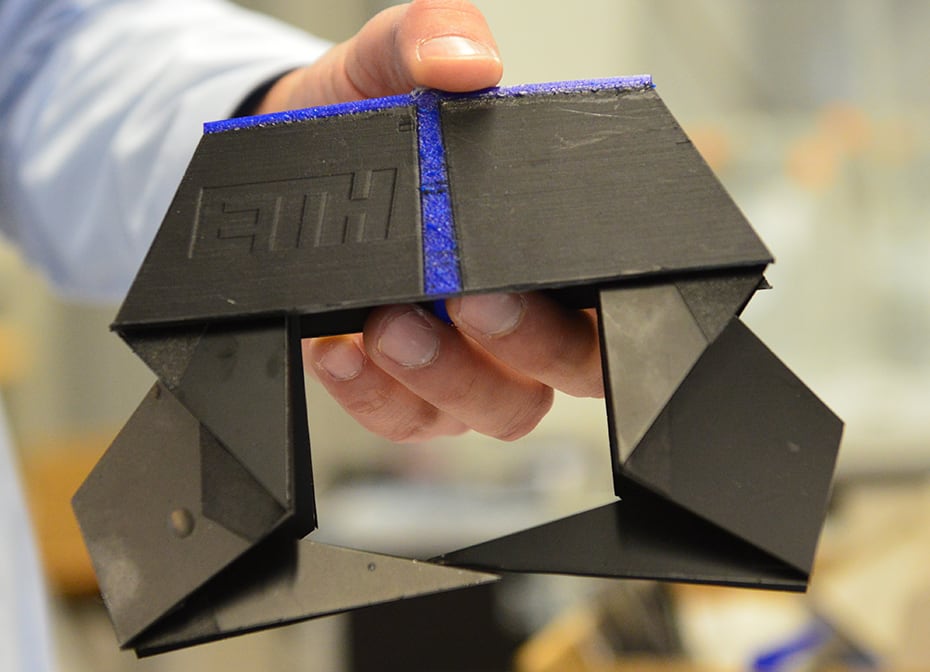Forscher der ETH Zürich haben multifunktionale Origami-Strukturen entwickelt und stellen diese mit dem 3D-Drucker her. Das Prinzip ist dem des Ohrwurms sehr ähnlich. Die Flügel des Ohrwurms werden durch das Flügelmittelgelenk ohne Energie aufgefalten bzw. zusammengefalten.
Wie bei Origami, der Faltkunst aus Japan, kommen die Falttechniken auch in der Natur vor. Diese sind weit ausgeklügelter und komplexer als die vom Menschen. Der Ohrwurmflügel beispielsweise wird im geöffneten Zustand um das Zehnfache größer als im geschlossenen Zustand. Der geöffnete Flügel ist stabil ohne weiterer Krafteinwirkung, um ihn zu schließen bedarf es nur einen „Klick“ und der Flügel faltet sich von selbst zusammen ohne Muskelkraft.
Realisiert wurden die Prototypen mit einem Multimaterialdrucker. Mit diesem wird ein sogenanntes 4D-Element in einem Durchgang mit vier harten Kunstoffplatten die mit elastischen weichen Kunststoff verbunden sind gedruckt. Der Zustand der Verbindungsfalten wurde dem Material „einprogrammiert“ um entsprechend Zug- oder Drehbewegungen zu erhalten. Im geöffneten Zustand ist das Element gleich dem Instektenflügel stabil und durch kurzes Antippen klappt es von selbst in sich zusammen.
Einsatzgebiete wären zum Beispiel Solarsegel für Satelliten bzw. Raumsonden die beim Transport ins All kompakt zusammengefaltet sind um Platz zu sparen und erst am Einsatzort aufgefaltet werden. Aber auch Wurfzelte, Landkarten oder Packungsbeilagen wären eine Verwendungsmöglichkeit. Somit würde man sich das lästige zusammenfalten sparen können.
Researchers at ETH Zurich have developed multifunctional origami structures and produce them using the 3D printer. The principle is very similar to that of the earwig. The wings of the earwig are unfolded or folded by the wing center joint without energy.
As with origami, the folding art from Japan, the folding techniques are also found in nature. These are far more sophisticated and complex than those of humans. The earwig wing, for example, in the open state is ten times larger than in the closed state. The open wing is stable without any further force, to close it only requires a „click“ and the wing folds by itself without muscle power.
The prototypes were realized with a multi-material printer. With this a so-called 4D element is printed in one pass with four hard plastic plates which are connected with elastic soft plastic. The condition of the connecting folds was „programmed“ into the material in order to obtain corresponding tensile or rotary movements. When opened, the element is equal to the instep wing stable and by tapping briefly, it works by itself in itself.
Fields of application would be, for example, solar sails for satellites or space probes, which are compactly folded together during transport to save space and only unfolded at the place of use. But also tents, maps or leaflets would be a possibility. Thus, one would be able to save the annoying fold up.
Source: https://3druck.com/forschung/ohrwurmfluegel-origami-aus-dem-3d-drucker-4377002/

